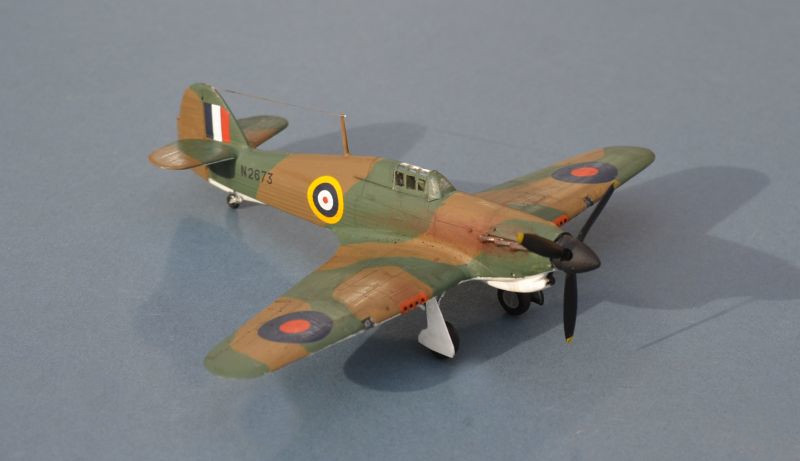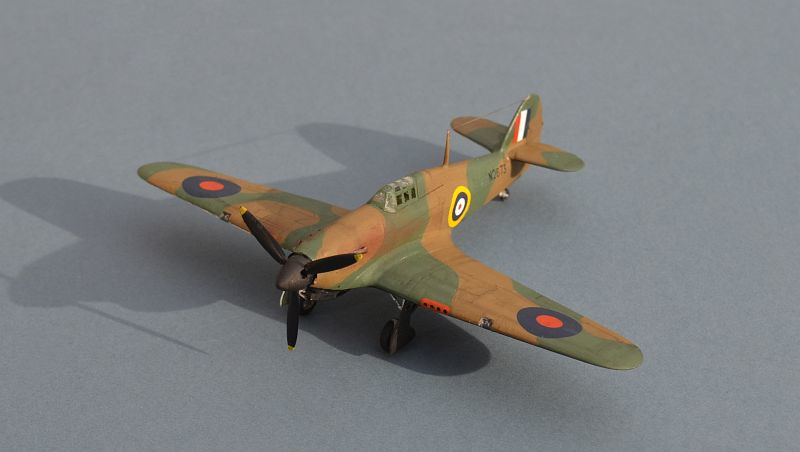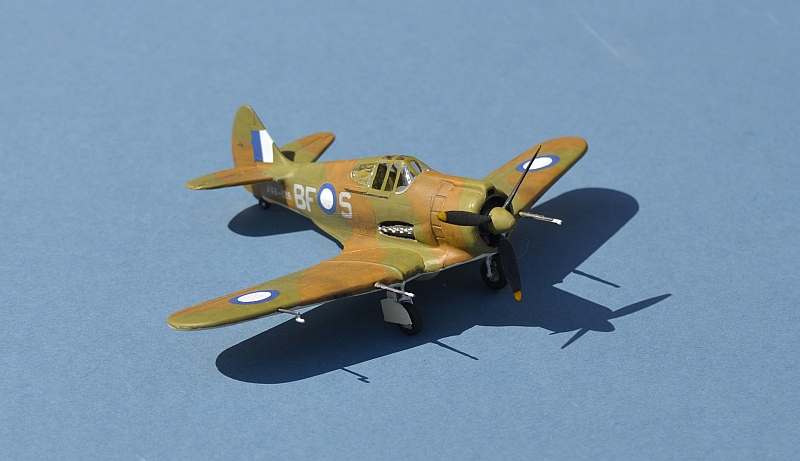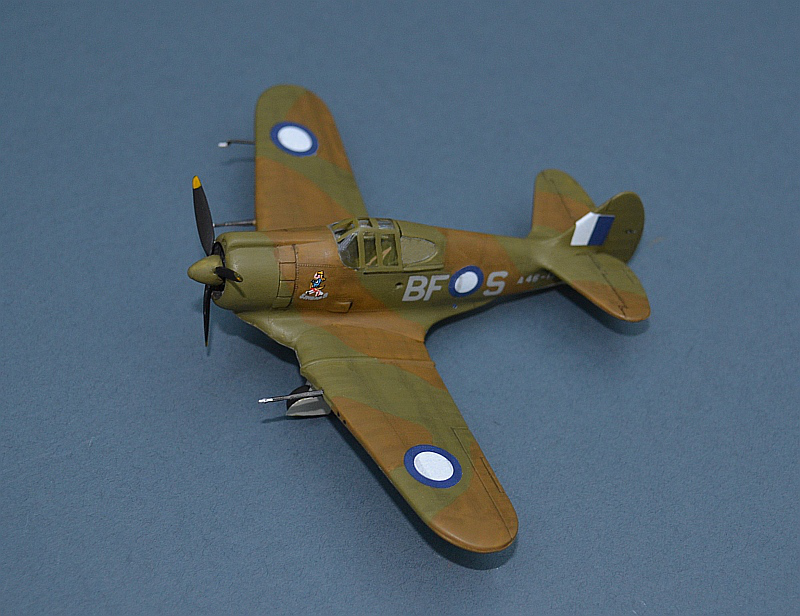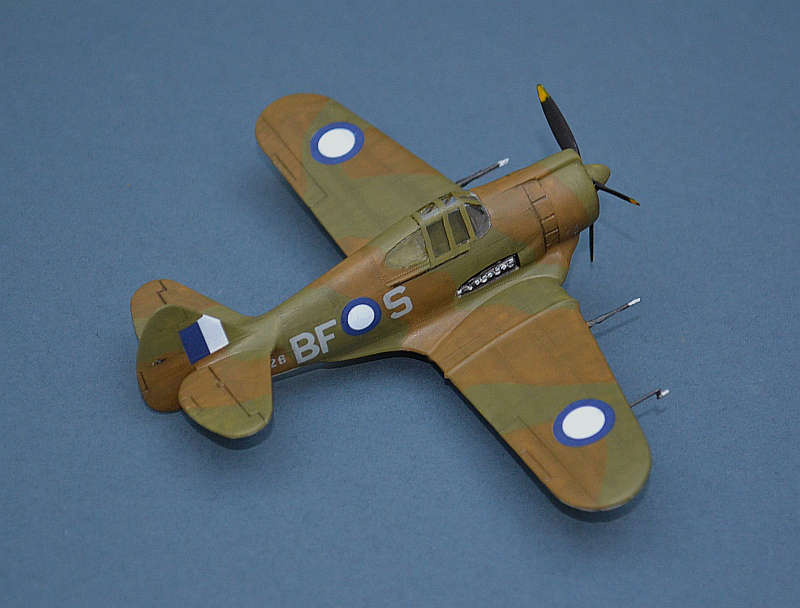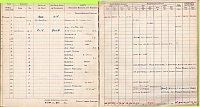Friends & Allies
Fighters of the Royal Air Force (1918-
Including Commonwealth Air Forces
This is the old Airfix Mk Vb Spitfire kit, which can definitely still hold its own with more modern kits. I have made some very small modifications; the distinctive Volkes tropical air filter under the nose, using the parts from an Airfix Mk Vc kit, a shorter blunter propeller boss and a seat harness. Link to build page
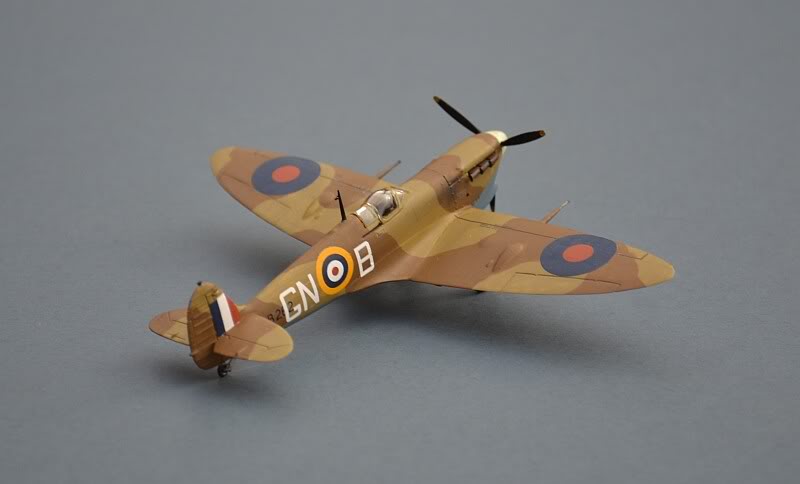
7 March 1942 saw the first deliveries of 15 Spitfire Vb aircraft to the the besieged island of Malta. Transported through the Mediterranean by sea and launched from the flight deck of the carrier HMS EAGLE, at a distant position some 650 miles from the island, the Spitfires were escorted across the Med by Blenheims and shepherded in to land by Malta's Hurricanes.
Their timely arrival at the height of the siege gave the defending air forces an
aircraft that could out-
The aircraft depicted by this model was flown by Flying Officer Robert McNair RAF, who claimed one damaged enemy aircraft (a Bf109) on the 18th March 1942.
Post Building Note: Robert "Buck" McNair's son has been kind enough to get in touch with me and forwarded a copy of his father's logbook covering the events of 1st to 29th March 1942, including record of the damaged Bf109 on the 18th March (one of 4 sorties McNair flew that day).
To see the logbook page in full, please click on the thumbnail image at the left
As built, the Spitfire was equipped with simple 2 position flaps (either fully open
or fully closed), intended for landing only. To enable them to take off safely from
EAGLE's short 660 ft deck, wooden wedges were jammed into the flaps to prevent them
closing fully. After take-

This was the first ever deployment of the Spitfire outside the European theatre; a second delivery of 9 Spitfires from HMS EAGLE arrived on 21 March. The fact that they could be spared from the defence of the UK was a clear a reflection of the growing strength and confidence of the British forces. The crews adopted the same tactics that had served so well during the Battle of Britain 2 years earlier; Spitfires stayed high and engaged the escorting fighters, whilst the Hurricanes attacked the bombers flying below.
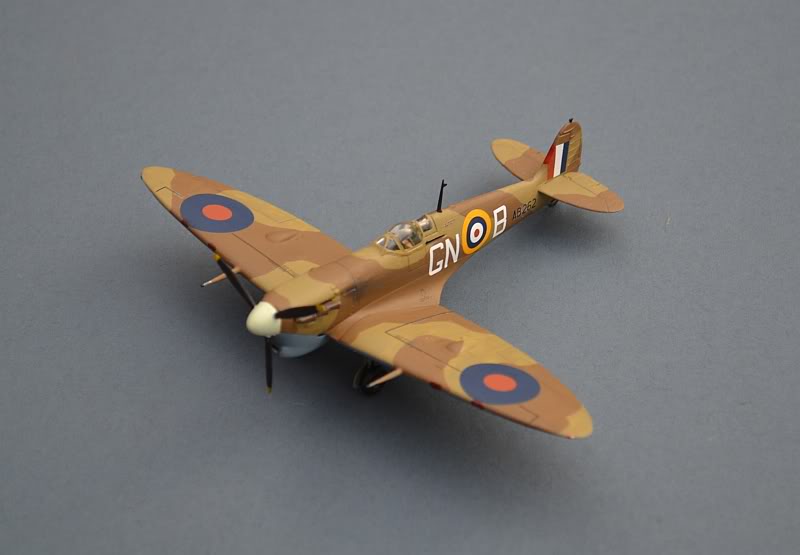
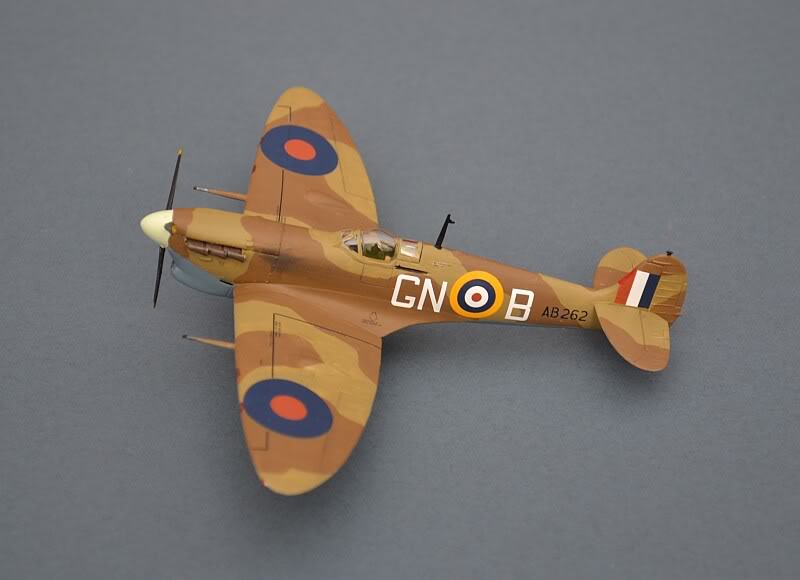
This is the Airfix kit in its current (2008) issue. The kit is infamous for its glaring inaccuracies, most noticeably the incredibly skinny nose. Nevertheless, with a little putty and plastic card, it can at least be converted into something that looks like a Defiant! Link to Build Page
The Defiant represented an evolutionary cul-
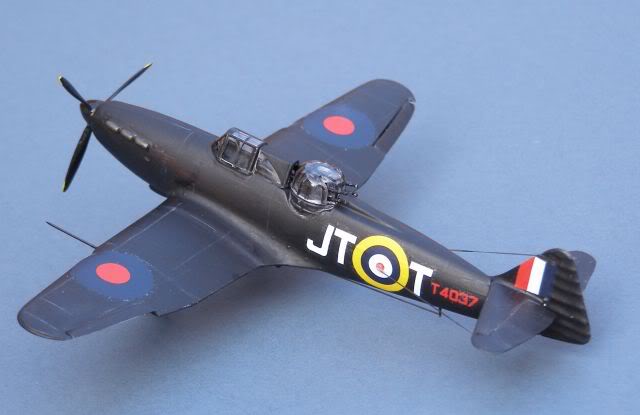
Thanks to the element of surprise, the Defiants' first daytime encounters were successful, with no less than 38 kills on one day. However, the Luftwaffe quickly changed tactics, attacking from ahead or underneath (Defiants had no forward firing guns), with depressingly predictable results. The RAF's losses were unsustainable ("its not aircraft we need, its pilots"), so it was rapidly transferred to night operations where it was not vulnerable to escorting fighters. It was remarkably successful in this role; indeed, most German aircraft shot down during the London Blitz were the victims of Defiant night fighters. However, the Defiant's glory was short lived and it soon passed to support roles, as target towing aircraft with the RAF and Fleet Air Arm.
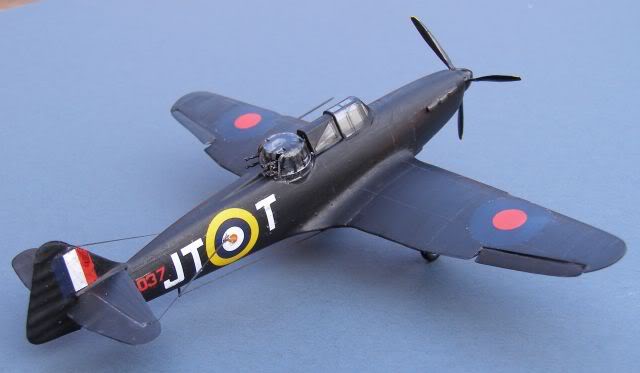
Defiants from 125 Sqn, based at Rerne played a significant but largely ineffective role in the Bath Blitz, during the infamous April 1942 Baedeker raids, named after the famous German Tourist handbook. In retaliation for the RAF's destruction of cultural sites in Lubeck and Rostock, the Luftwaffe vowed to destroy every British city with more than 3 stars in the guidebook. Despite the city hosting 2 key operational night fighter bases and 10 Group's Sector Control HQ at RAF Box, the attackers circled unmolested above the city of Bath on 2 consecutive nights, destroying much of the city centre and killing over 400 inhabitants. At least part of the reason for this ineffectiveness was that 125 Sqn were half way through converting from the Defiant to the Beaufighter and not fully worked up in their new tactics. 87 Sqn's Hurricane night fighters, from RAF Charmy Down just outside the city, found it equally difficult to attack because the Nazi aAF Colircraft were flying in tight circles and unusually low (the bombers, having dropped their bomb loads, were now strafing civilians on the streets). As the next night's second raid unfolded (that night, the German aircraft, astonished by the lack of any defence, had returned to France, refuelled and flown back for a second go), out of sheer desperation, several RAF aircrew abandoned their Beaufighters and reverted to their familiar, but recently decommissioned Defiants, sadly to little effect; one aircraft managed to hit a Ju88, causing minimal damage before crash landing back at Colerne, another attacked the raiders only to find that his gun firing mechanism had been dismantled, whilst a third failed to join the fray at all, due to an intercom failure.
112 Squadron RAF, 239 Wing, Western Desert Air Force,
Amriya South LG.91, Egypt, August 1942
Hasegawa's P40E kit is one of their very first engraved moulds and is a joy to build. Fit is near perfect, detail is restrained but adequate.

Early in 2012, an abandoned P-
The P-
Nearly 14,000 P-
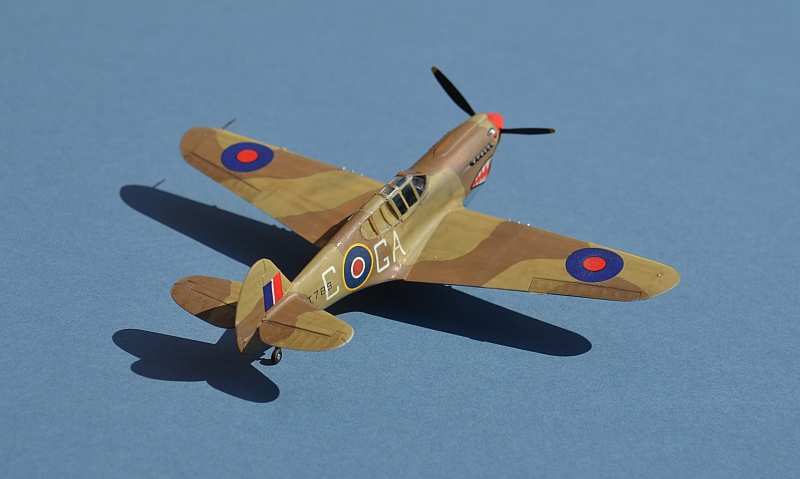
P-
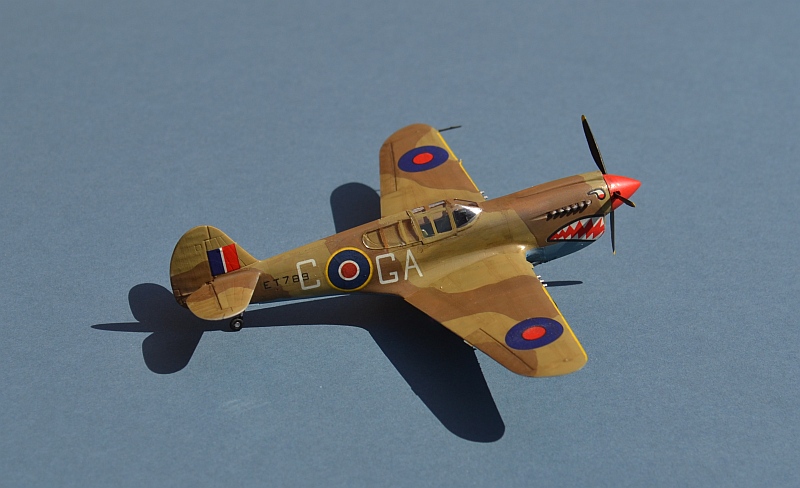
The first ever USAAF combat victory against a Luftwaffe aircraft was claimed in August
1942 by a P-
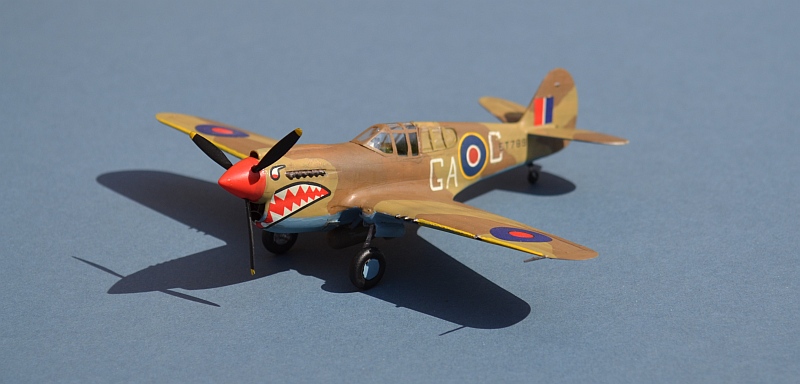
Another ancient Airfix kit, this mould was first issued in 1958! There are many more modern Beaufighter kits around, but this one is still fun!
The Bristol Beaufighter was developed from the Blenheim and the Beaufort torpedo bomber. By using the main assemblies from the Beaufort, its development was exceptionally fast; confidence was so high that a 300 aircraft production contract was placed with Bristol before the prototype had first flown.
Originally employed as a night fighter, later on it made its mark as a torpedo and
rocket armed anti-
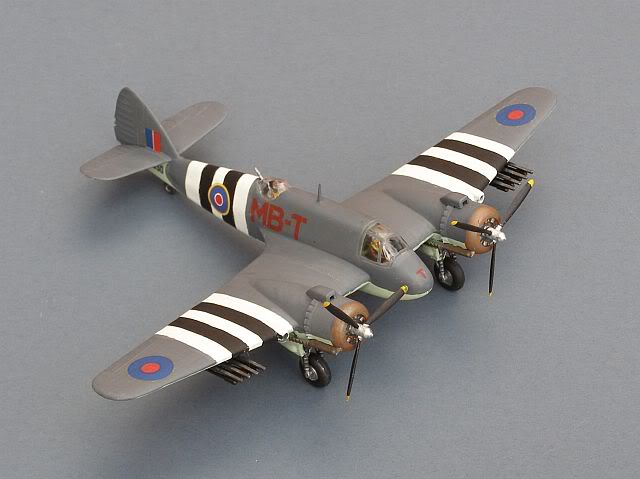
The North Coates Strike Wing of RAF Coastal Command was the largest and most successful
dedicated anti-
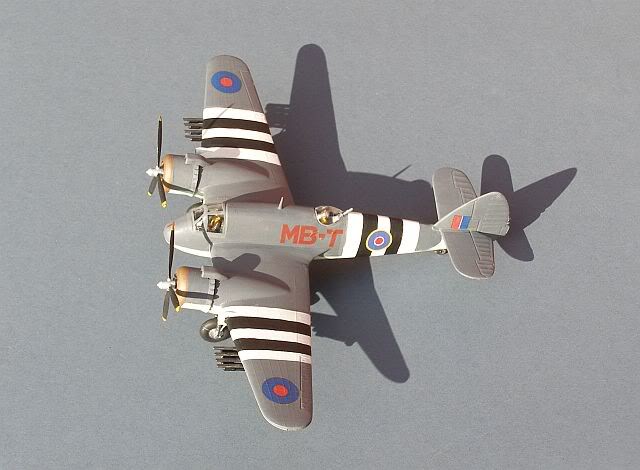
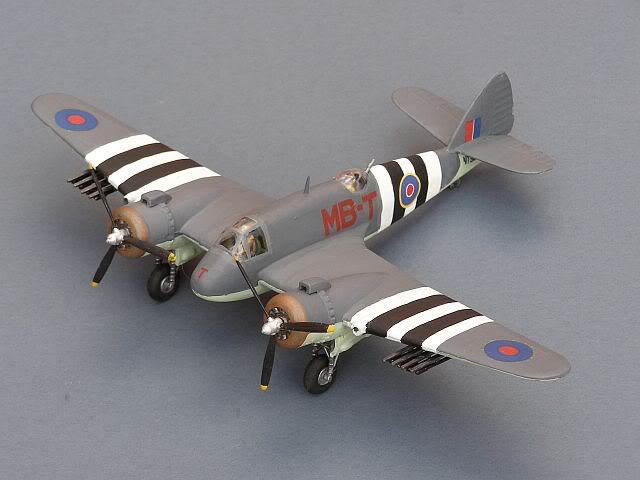
Yet another vintage Airfix kit, this mould was first issued in 1968.

The Bristol Blenheim formed the mainstay of Bomber Command during the early years
of WW2. When it first entered service, it was faster than most contemporary fighters,
but by 1940 it had been outclassed, and suffered badly during the Battle of France.
number of RAF squadrons used the Blenheim as a fighter, both within Fighter Command
and Coastal Command, where Blenheims often flew top-
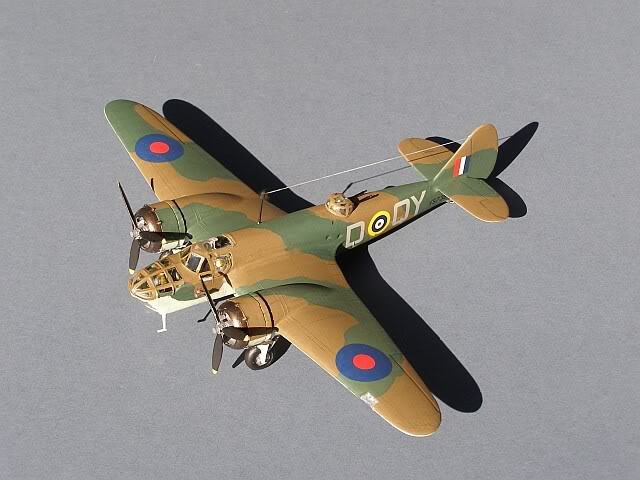
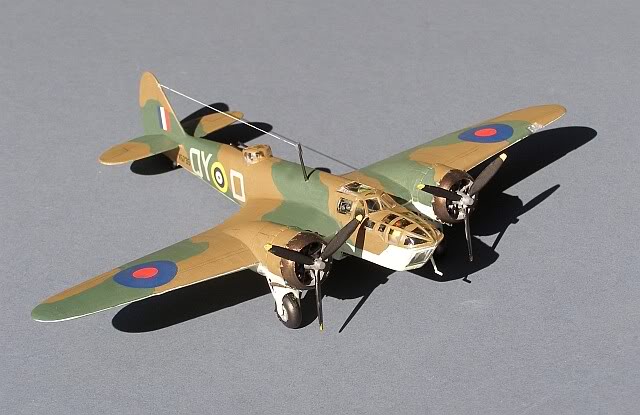

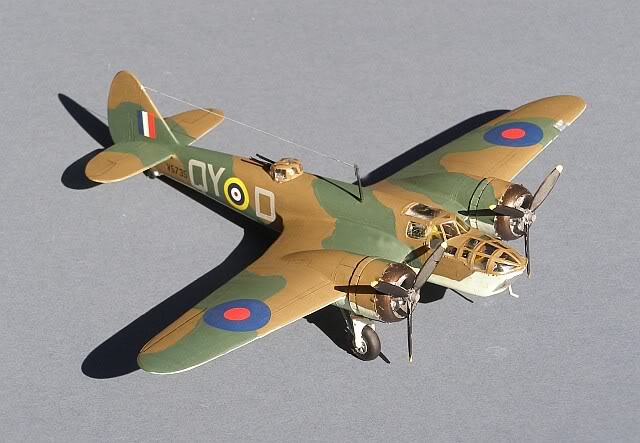
Brewster B-
Sembawang, Singapore & Ipoh/Kuala Lumpur, Malaysia, December 1941
A slightly newer Airfix mould; as one of the last Airfix kits to be issued in poly bags, I beieve it hails from the early 1970s (although strangely, the Arthur Ward Airfix book does not mention its release date). It’s nicer than the Matchbox equivalent and an easy build, although you need to get rid of those rivets!
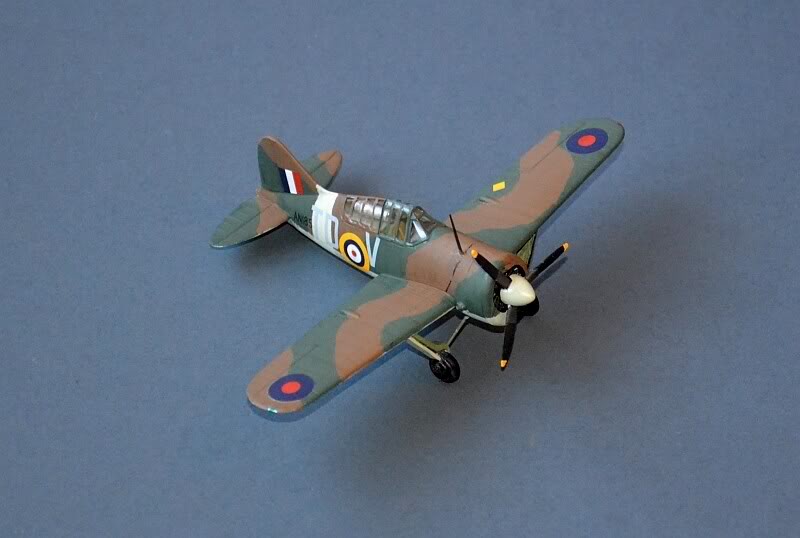
Brewster's stubby Buffalo fighter was a reasonable design, let down by extremely poor build quality arising largely from Brewster's lack of volume manufacturing experience.
In Finnish hands, after a local re-
The original batch of Buffaloes procured for the RAF by the British Purchasing Commission in Washington were quickly diverted to the Far East and issued to Commonwealth squadrons, including 453 Sqn RAAF. Following the Japanese invasion of Malaysia on 8th Dec, 453 moved north to Kuala Lumpur and Ipoh airfields, to provide close support to the defending Commonwealth troops.
After 3 weeks of intense fighting, 453 was withdrawn to Singapore on 24th December with only 6 aircraft remaining serviceable. The squadron continued to fight in Malaysia and over Singapore until February 1942, managing to achieve a creditable kill ratio of 2:1 despite the limitations of the Buffalo and the desperate operational situation.

453 Squadrons was assigned to support Force Z, led by battleships HM Ships PRINCE
OF WALES and REPULSE, on their ill-
At the last minute, the Captain of REPULSE, defying his Flag Officer's orders, broke wireless silence to radio for help; Buffaloes from 453 Sqn were quickly on the scene, but it was too late.
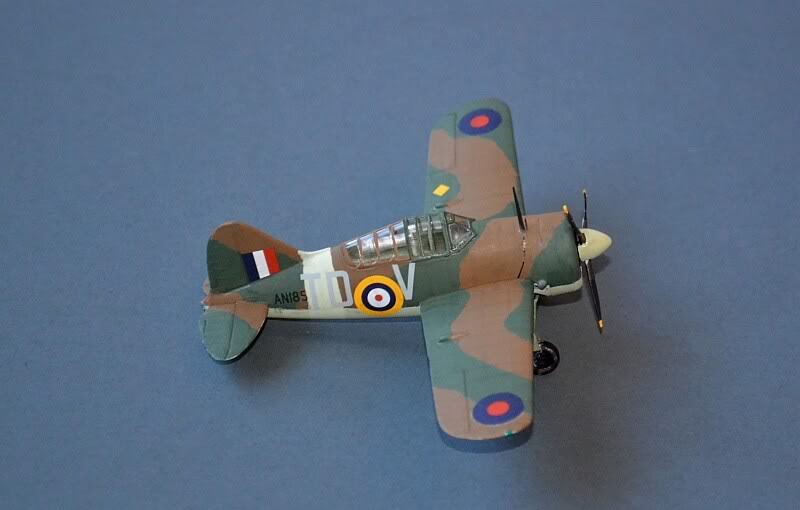
CAC13 Boomerang, 4 Sqn Royal Australian Air Force
Shaggy Ridge, Ramu Valley, Finnisterre, New Guinea, January 1944
The Airfix boomerang is an old kit, simple and rather crude, but still entirely buildable.
My list suggests it was first issued in 1965, but mine is a 1990s issue, with typically
poor Heller-
During the early years of WW2, Australia began to be alarmed by the prospect of British-
The Boomerang was one of the latter, evolved from the DOuglas Harvard and CAC Wirraway, it was intended as a fighter, but found its niche in the close ground support role over the jungles of New Guinea and Bougainville, where it operated in a close team arrangement with Corsair aircraft of the Royal New Zealand Air Force.
Tamiya have a well earned reputation for prodicing superbly engineered kits. 1/72
is not their normal scale (most Tamiya 1/72 kits seem to be Italeri-
Almost perfect fit, very well judged surface detail and a reputation for accuracy make this a desirable and very pleasing kit to build.
143 Sqn was a Coastal Command Fighter Squadron, based out of North Coates and various RAF bases in the South West. In September 1944 the Squadron transitioned to the Mosquito from its Beaufighters and moved to RAF Banff in Scotland.
As part of the Banff Strike Wing it conducted anti-
This kit came to me courtesy of Mrs T, who found it in a charity shop for the grand sum of £2, fully built but unpainted. Fortunately I already have the same kit in the stash for a future project, allowing me to use the spare decals to refurbish this one.



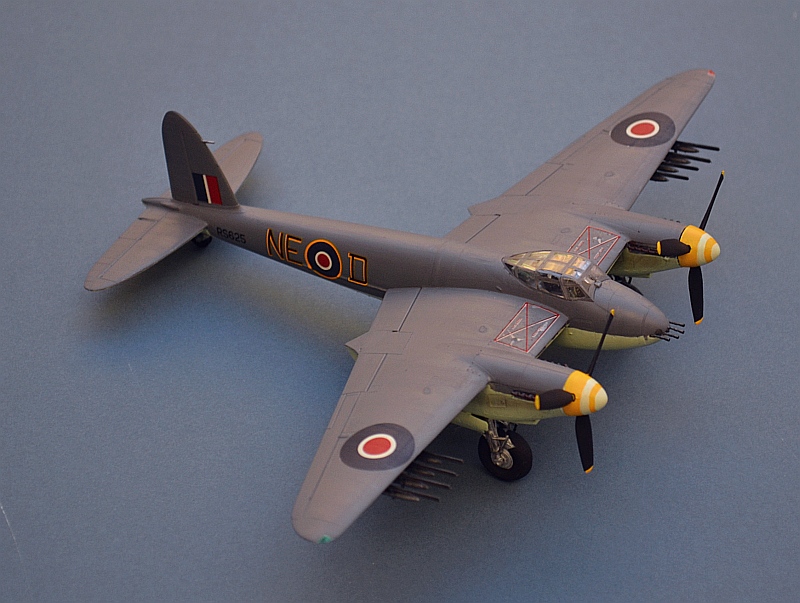
The Tempest was a development of the Typhoon, overcoming many of the technical and
operational issues that plagued its predecessor, and introducing a new laminar flow
wing similar to that fitted on the P-
Tempests participated in D-
This model represents the mount of top scoring French Ace, Pierre Closterman, who
flew with the RAF from 1942 until the end of the war. Officially credited with 33
air to air victories, he was also able to claim 225 motor vehicles , 72 locomotives
and 5 tanks destroyed, plus two E-
In may ways, the P-
Intended as a high altitude fighter, it was equally capable as a low level ground
attack aircraft, a role in which the RAF successfully used over 700 Thunderbolts
of several variants., mainly in Burma and India. By mid 1945 it was being widely
replaced in US service by P-
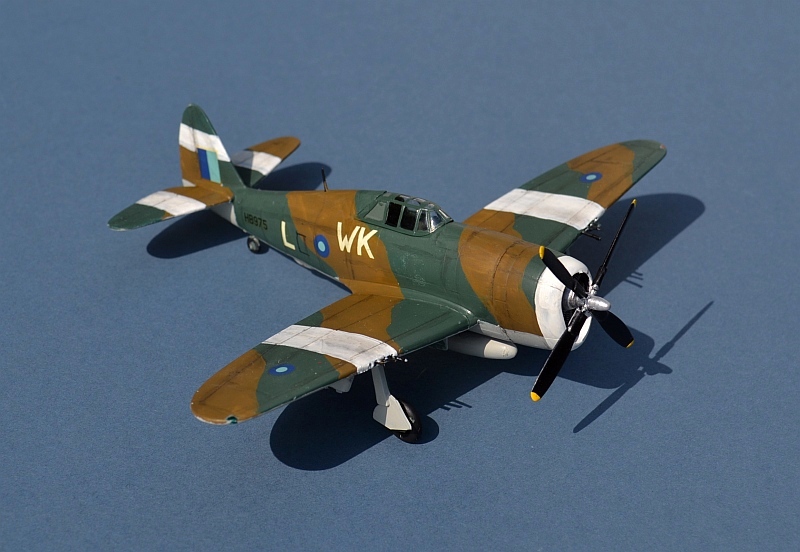
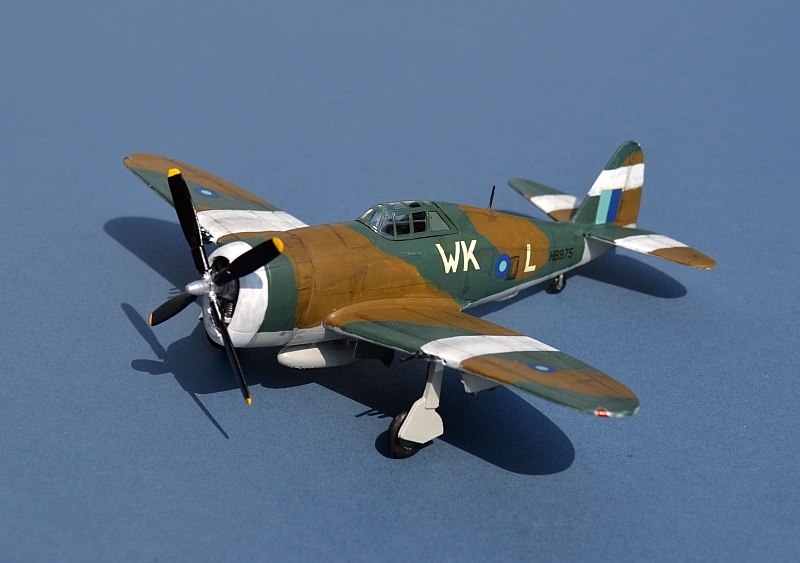
Another old FROG kit, this one is basic in the extreme, with no interior cockpit detail and a rather suspect overall shape. It dates originally from 1959, although mine is a 1974 issue with rescribed and rather more delicate panel lines than the first version of this kit.
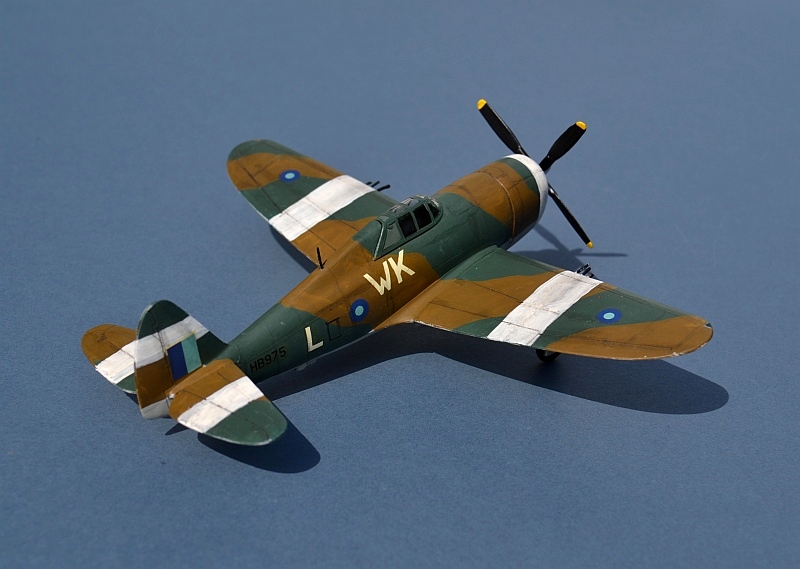
An old FROG kit with rather basic detail. It is an easy buiild, but really one for the enthusiast these days.
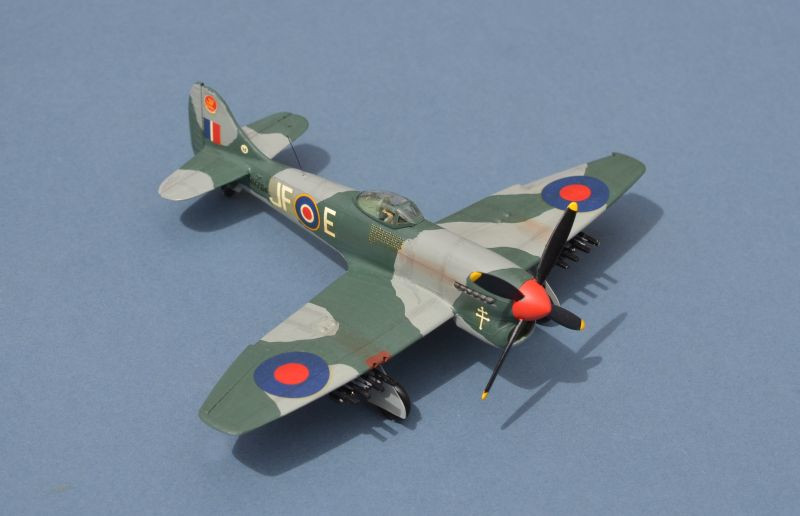
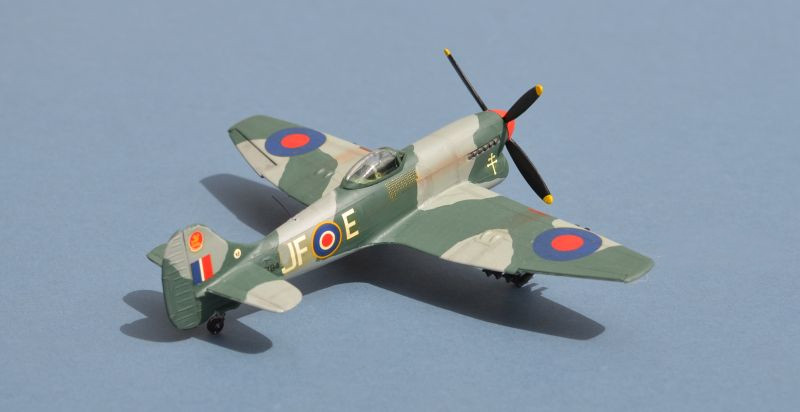
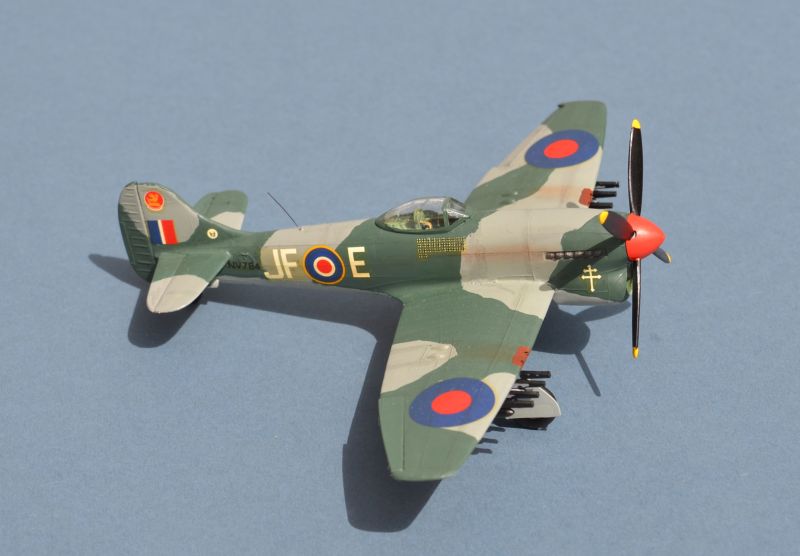
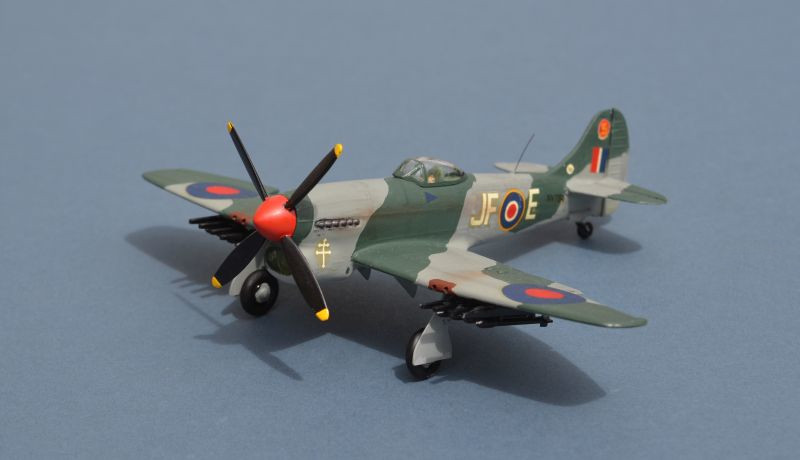
This is the old Airfix Mk Vb Spitfire kit once more, this time in colours and markings for the aircraft flown by Sqn Ldr Johnny Lynch of 249 Sqn from RAF Krendi ( a satellitre of Takali) in Malta during 1943. Lynch was credited with the 1,000th kill over Malta in this aircraft. The blue colours were developed by RAF Malta to give better camouflage over the sea. Link to build page
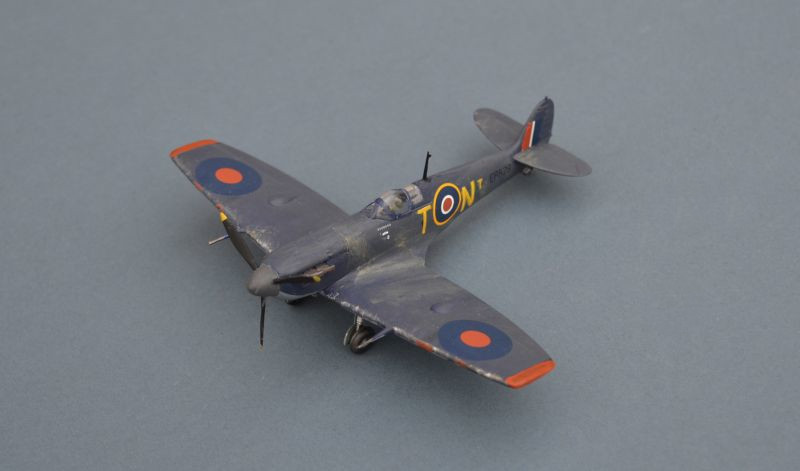
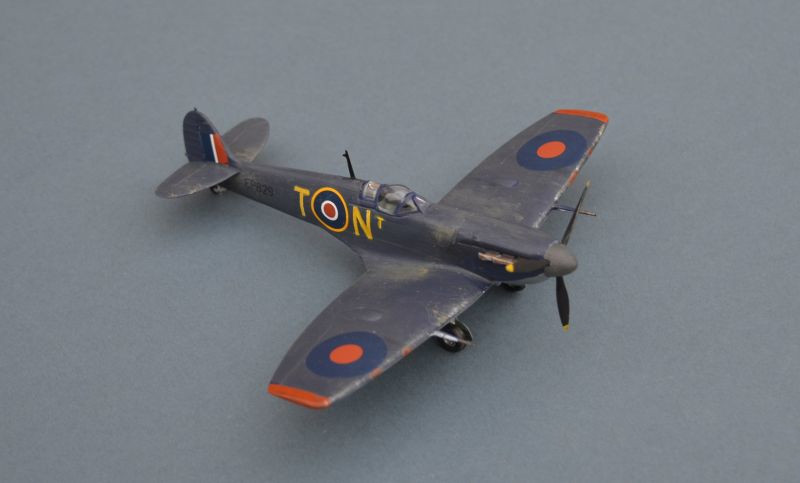
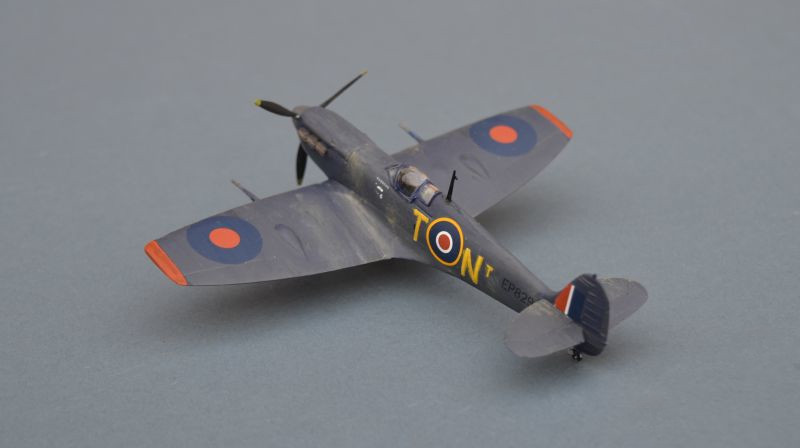
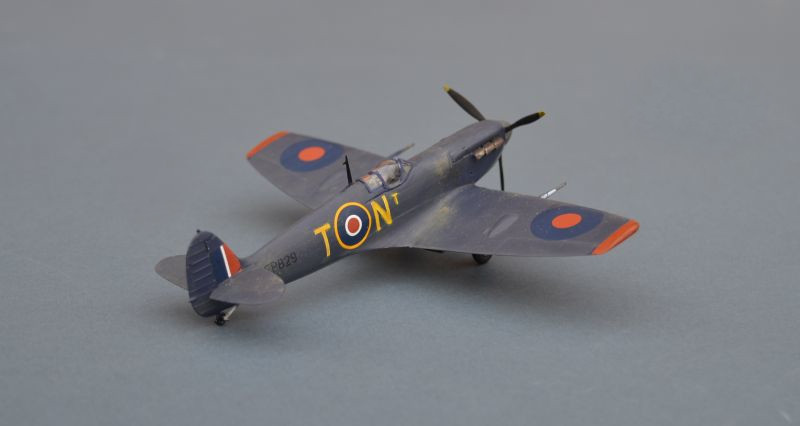
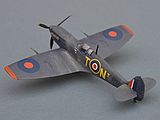
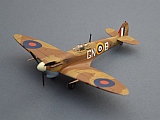



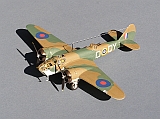
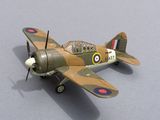
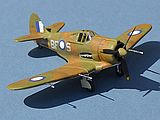
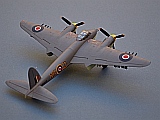
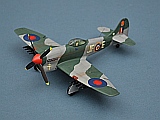
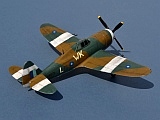
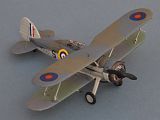
The Gladiator first entered service in 1937 and saw action with the RAF during the early parts of WW2 in almost all war theatres. As it was already badly obsolescent at the start of the war, its successes were limited. Nevertheless, despite its disadvantages, pilots of the RN and RAF flew Gladiators andSea Gladiators in many of the most bitter battles of the early war, and the successes that they did have are testament to their remarkable courage and skill. The Sea Gladiator was an interim design for the Fleet Air Arm, only differing from the RAF version by fitting an arrestor hook and a dinghy stowage beneath the fuselage.
The Malta Hal Far Fighter flight was established in March 1940, using crated reserve
aircraft held on the island for HMS GLORIOUS. Pilots were all volunteers of whom
only one had any fighter experience. The initial plan was to use the Gladiators to
train pilots prior to the arrival of the promised Hurricanes, but the Italians pre-
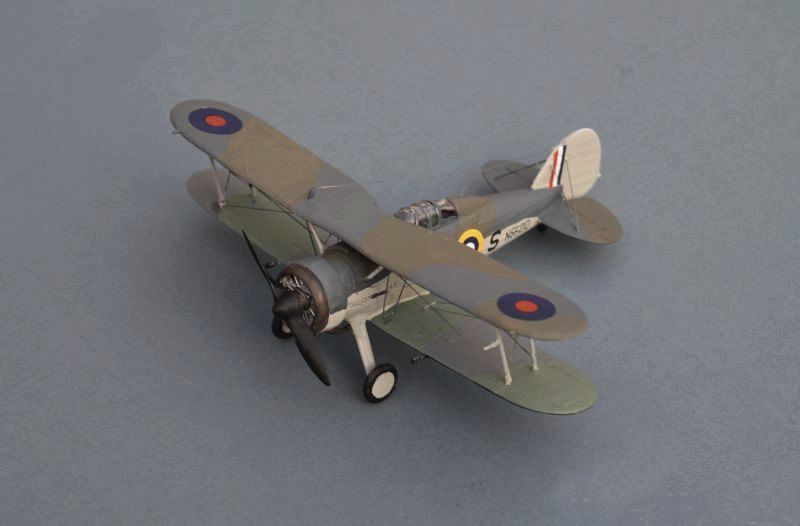
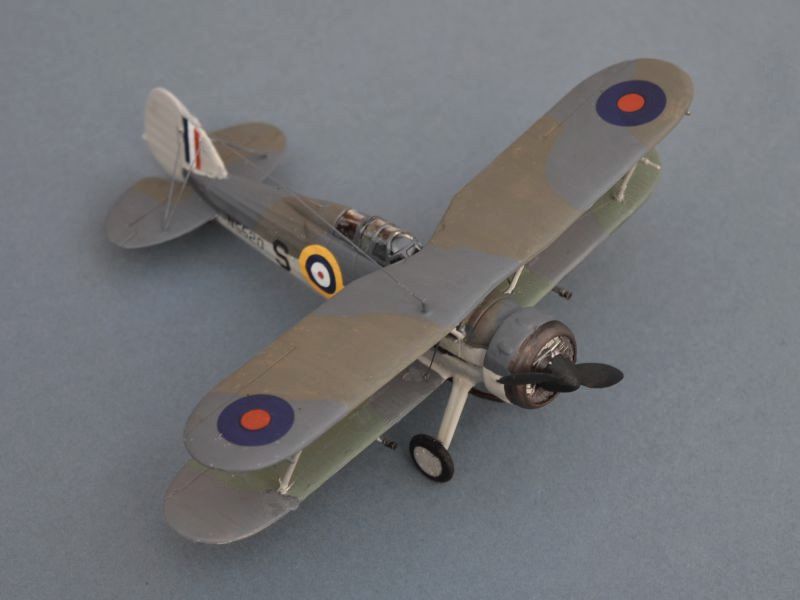


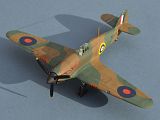
Five Hawker Hurricanes were ferried to Malta via France and Tunis by the end of June, joining the Sea Gladiators of the Hal Far Fighter Flight. The Fall of France on 25 June 1940 stopped the delivery of replacement aircraft to Malta via that route, so on 2 August 1940, twelve Hurricanes were flown from the aircraft carrier Argus to Malta.
The newly arrived Hurricanes (which initially formed No. 418 Flight) became No. 261 Squadron RAF on 16 August 1940, with the new squadron absorbing the Hal Far Fighter Flight.
The squadron suffered badly from attacks by both German and Italian aircraft and when a relief squadron (No. 185 Squadron) arrived in Malta the squadron was disbanded and the remnants were absorbed into No. 185 Squadron between 12 and 21 May 1941.
Hurricane N2673, flown on this occasion by P/O Anthony John Reeves, was lost to
a Bf-
